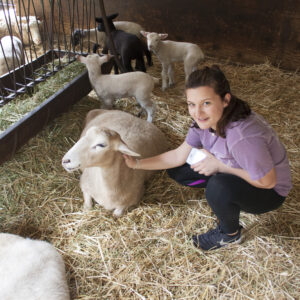Food safety has garnered media attention a lot in the past few years, especially with the recent salmonella outbreak in peanut butter. This reminds us to practice safe food handling at home and school. Some reminders include:
1) Wash hands and wrists for 20 seconds before eating or prepping food.
2) Use a thermometer to ensure proper cooking temperature.*
3) Defrost meat, poultry and fish in the refrigerator (vs. sitting out on the kitchen counter).
4) Use separate cutting boards for raw meat and veggies.
5) Place leftover foods in the fridge within two hours of removing from the stove or oven.
6) Store hot foods in shallow containers, allowing them to cool down a bit before placing them in the fridge (otherwise a big pot of chili will take 24 hours to get to proper temperature allowing bacteria to grow in the chili and causing the interior temperature of the fridge to rise).
Of course, sometimes germs can be our friends. Even our own intestines contain a generic E. coli that helps to digest our food. Foods such as sauerkraut, pickles, sourdough bread, cheese, buttermilk and yogurt contain bacteria or yeast. Sometimes you will note that yogurt may list “live cultures” on the container, usually referring to two bacteria: lactobacillus and bifidobacterium.
Recently the big marketing push has been probiotics. In simple terms probiotics are friendly bacteria similar to those found in our intestines. The idea goes back to good vs. evil, meaning our health may be related to how many good bacteria are in our intestines vs. bad bacteria. Although there is promising evidence that shows probiotics can help with diarrhea, much of the research has been conducted on animals. Prebiotics, foods that contain fiber, may also show up on grocery shelves. This is one of those times, though, when it is important to state “buyer, beware,” as products may be way ahead of the science. Fortunately the National Institute of Health is very interested in the topic and over time we will see what is truth and what is fiction. Eventually we may be able to identify what each bacterium does and how much is needed. Right now there is no label law for probiotics. This would be helpful as some research has shown that live bacteria in the amounts of 5 to 10 billion are needed for beneficial results. It is important to note that fruit and veggies have natural prebiotics and do promote healthy germs, while decreasing animal protein intake can decrease the bad bacteria in our intestines.
Even though research needs to continue, yogurt is still a great snack to enjoy, whether or not it contains live cultures. Select yogurt low in sugar and artificial ingredients. A great yogurt to enjoy is Greek-style yogurt. Make sure to select nonfat or lowfat yogurt. One brand, Fage, is zero percent fat and half a cup contains only 60 calories (and live cultures). It is very creamy and rich tasting. Kids may not like the sour taste but this is easy to mask with a little bit of honey and you can also add raisins. For a tasty dessert, bake blueberries or strawberries in the oven (add a little bit of sugar and mix). After the fruit bakes for about 10-15 minutes you’ll have a syrup-like mixture. Poor this over your Greek yogurt and enjoy.
*For proper temperature guides go to: http://aids.about.com/od/nutrition/a/foodtemp.htm
Anne Kolker, MS, RD










